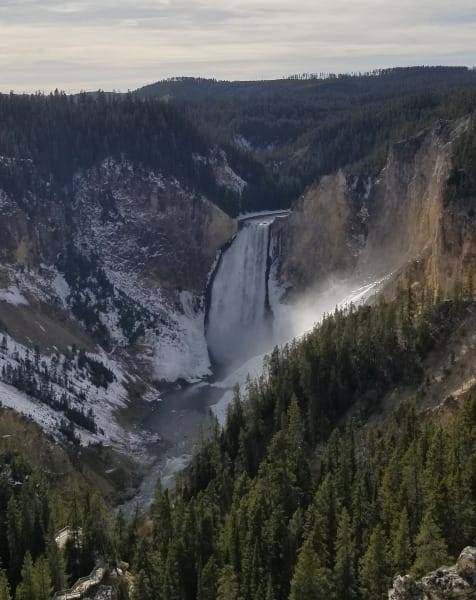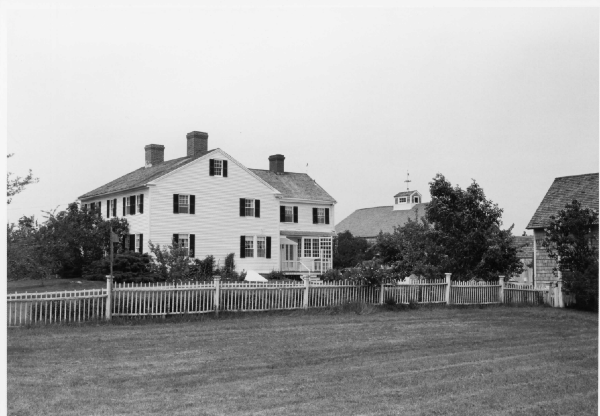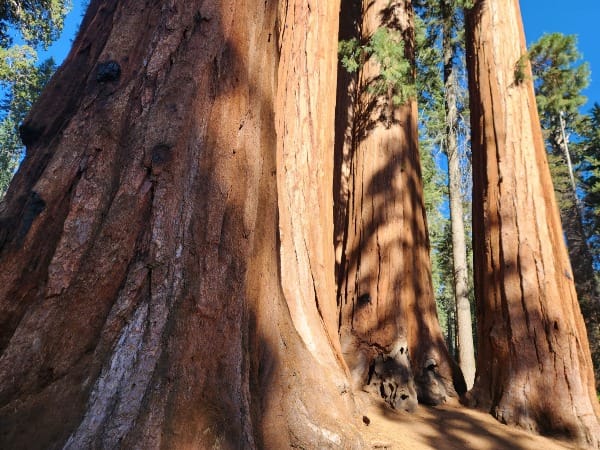Mulling It Over
Steinbeck and writing from the road

Five years ago on a solo road trip with my beloved dog, I read John Steinbeck's Travels with Charley: In Search of America (1962). I distinctly remember sitting in the Kalaloch Campground in Olympic National Park, one eye on the Pacific Ocean, the other on Steinbeck's prose, Samadhi curled at my feet.

I picked up Travels with Charley again this week because I'm preparing for another road trip—more national parks, different dogs, and, this time, my spouse. I wanted to remember any wisdom Steinbeck gained from his trip across America, a counterclockwise circuit that began on Long Island, skimmed along the top of the nation, down its Pacific coast, and back across the South until he nosed his way home to Sag Harbor.
Our itinerary is not quite so continental, but I do have ambitions. The trip is partly, maybe mostly, vacation, but it will also fill my storehouses for writing the way all travel does and our route traces an oblong circle going from one national park to another. When you are writing a history of the parks, a trip like this is research—the best kind of research.
Because I'm planning to put myself in a vehicle with dogs and drive and find things to write about, I figured Travels with Charley might prime me for the experience.

It turns out Steinbeck's mission and predisposition and my own didn't match perfectly. "I must confess to a laxness in the matter of National Parks," he wrote.
I haven't visited many of them. Perhaps this is because they enclose the unique, the spectacular, the astounding—the greatest waterfall, the deepest canyon, the highest cliff, the most stupendous works of man or nature. And I would rather see a good Brady photograph than Mount Rushmore. For it is my opinion that we enclose and celebrate the freaks of our nation and of our civilization. Yellowstone National Park is no more representative of America than is Disneyland.
I suppose there is something to that witticism. However, that enclosing and celebrating says something about Americans. A nation that creates both Disneyland and Yellowstone is marking what it values, even if it is novelty.
And of course, Matthew Brady framed his photographs as deliberately as any artist. They no more depict an unvarnished reality than Steinbeck's own book—one that depicts him and Charley alone trekking across the country when most nights his wife joined him.

Steinbeck may have found Yellowstone freakish—"the wonderland of nature gone nuts"—but he was not consistently dismissive of nature.
When he hit California's redwoods, not yet a national park when he made his drive in 1960, Steinbeck rhapsodized.
The redwoods, once seen, leave a mark or create a vision that stays with you always. No one has ever successfully painted or photographed a redwood tree. The feeling they produce is not transferable. From them comes silence and awe. It's not only their unbelievable stature, nor the color which seems to shift and vary under your eyes, no, they are not like any trees we know, they are ambassadors from another time. They have the mystery of ferns that disappeared a million years ago into the coal of the carboniferous era. They carry their own light and shade. The vainest, most slap-happy and irreverent of men, in the presence of redwoods, goes under a spell of wonder and respect. Respect—that's the word. One feels the need to bow to unquestioned sovereigns. I have known these great ones since my earliest childhood, have lived among them, camped and slept against their warm monster bodies, and no amount of association has bred contempt in me. And the feeling is not limited to me.
The feelings Steinbeck captured are why Americans have protected such landscapes. Eight years after his trip, the year Steinbeck died, Congress created Redwood National Park.

I didn't pick up Travels with Charley remembering these specific passages or even that Steinbeck wrote evocatively about nature.
I did think he might show me something as a writer, though. I was right.
For instance, early in the book, even before he embarked, Steinbeck charted his intention to write on the trip. He packed paper, a typewriter, notebooks, and reference books. But then he confessed, "I also knew from thirty years of my profession that I cannot write hot on an event. It has to ferment. I must do what a friend calls 'mule it over' for a time before it goes down."
My last long road trip like this was in 2019, and I'm still mulling it over. Some projects have appeared from the experience; others await completion. Still, I'm stacking my books, tablet, laptop, and notebooks with the vain expectation they'll do me good on the road.

In moments, Steinbeck revealed the folly of objectivity. Nonfiction writers owe fidelity to truth, of course. At times, an expectation arises that such a writer must separate themself from their text. Yet, Steinbeck noted the difficulty with that mirage of objectivity:
So much there is to see, but our morning eyes describe a different world than do our afternoon eyes, and surely our wearied evening eyes can report only a weary evening world.
As if to demonstrate how subjective experience changes what one can write because of what one experiences, Steinbeck shows a transformation in just a few pages. "I was not prepared for the Bad Lands," he wrote about South Dakota. "They deserve this name. They are like the work of an evil child." He traveled through them, talking to local people, and set up camp with a fragrant campfire. Then, something shifted in the Badlands' twilight.
I thought how every safe generality I gathered in my travels was canceled by another. In the night the Bad Lands had become Good Lands. I can't explain it. That's how it was.
One charge I take from that is to be open to what is, without explaining it. A historian who spent a quarter-century in classrooms explaining things, I find that way of being open to experience is harder practiced than preached.

Steinbeck, though, was unquestionably right to distrust pat explanations he found in other writers.
I've always admired those reporters who can descend on an area, talk to key people, ask key questions, take samplings of opinions, and then set down an orderly report very like a road map. I envy this technique and at the same time do not trust it as a mirror of reality. I feel that there are too many realities.
Steinbeck knew such writing presented a distorted mirror, for he was a master distorter. His solo trip wasn't often solo. His conversations were reconstructed. The characters, composite. Readers of Travels with Charley who believe they are encountering a raw account are mistaken.
Some shaping is necessary in all writing, of course. "Writing is selection," according to John McPhee in Draft No. 4. Yet Steinbeck may have stretched beyond that. But the message that comes from my notes in Travels with Charley—themselves evidence of a mind five years younger—is the need for some surrender.
In the book's third paragraph, Steinbeck lays it out in terms of the trip.
We find after years of struggle that we do not take a trip; a trip takes us. . . . Only when this is recognized can the blown-in-the-glass bum relax and go along with it. Only then do the frustrations fall away. In this a journey is like a marriage. The certain way to be wrong is to think you control it.

Here's to letting the trip take us and perhaps following the easy lead of the dogs.
Charley doesn't have our problems. He doesn't belong to a species clever enough to split the atom but not clever enough to live in peace with itself.



Comments ()